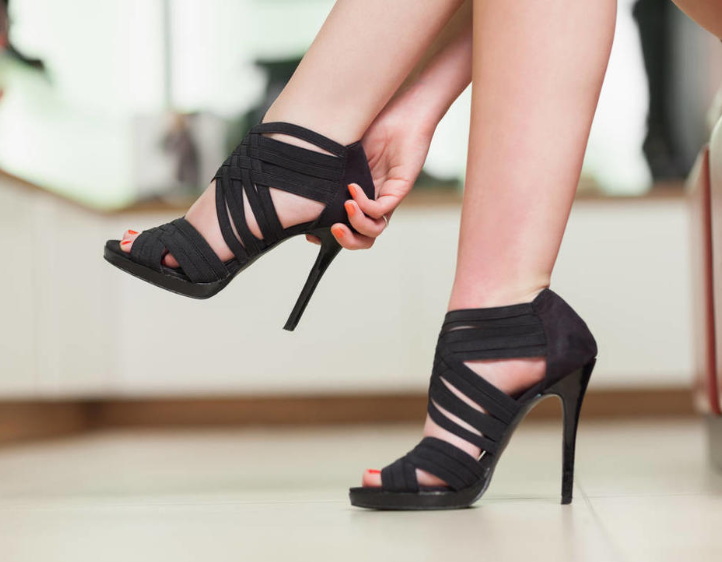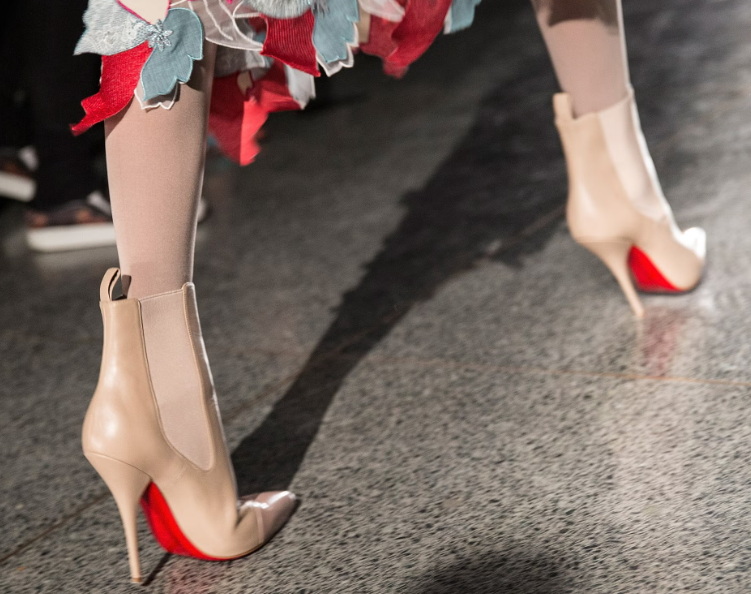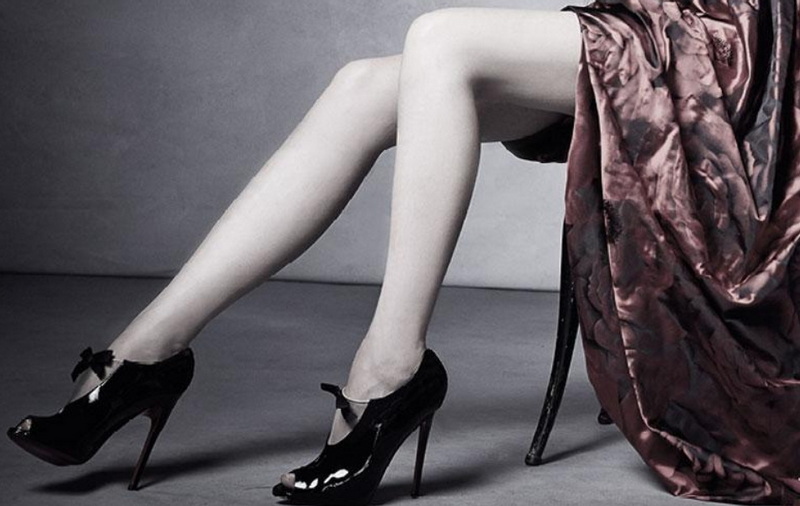Content Menu
● The Origins of High Heels
>> Persian Cavalry and the Birth of Heels
>> European Aristocracy Adopts the Trend
● The Transition to Women's Fashion
>> Catherine de Medici: A Pivotal Figure
>> The 17th Century: A Turning Point
● The 18th Century: Heels Become Feminized
>> The Enlightenment's Impact
>> High Heels as a Symbol of Female Sexuality
● The 19th Century: Heels in Women's Fashion
>> Victorian Era and Modesty
>> The Rise of Photography and Heels
● The 20th Century: Modern High Heels
>> Technological Advancements
>> Fashion Icons and Cultural Impact
● High Heels in the 21st Century
>> Symbol of Empowerment vs. Oppression
>> Diversity in Design
● The Psychology of High Heels
>> Height and Power
>> Altered Gait and Attractiveness
● Health Considerations
>> Foot and Back Problems
>> Balancing Fashion and Health
● Conclusion
● FAQ
>> 1. When were high heels first invented?
>> 2. Why did men stop wearing high heels?
>> 3. Are high heels bad for your health?
>> 4. Who made high heels popular for women?
>> 5. Why are red-soled high heels considered luxury items?
● Citations:
High heels have become an iconic symbol of femininity and fashion in modern times. However, the history of high heels is far more complex and surprising than many might imagine. This article delves into the fascinating journey of how women came to adopt high heels as a staple of their wardrobes, exploring the historical, cultural, and social factors that contributed to this trend.

The Origins of High Heels
The story of high heels begins not with women, but with men. Contrary to popular belief, high heels were initially designed and worn by men for practical purposes.
Persian Cavalry and the Birth of Heels
In the 10th century, Persian soldiers wore heeled footwear to help them stay in their stirrups while riding horses[1]. These early heels served a crucial function in warfare, providing stability and allowing cavalrymen to stand up in their stirrups, which gave them a significant advantage in combat.
European Aristocracy Adopts the Trend
As trade and cultural exchange between Persia and Europe increased, the concept of heeled shoes made its way to European courts. European aristocrats, particularly men, adopted high heels as a symbol of status and power[2]. The impracticality of walking in heels signified that the wearer didn't need to engage in manual labor, thus emphasizing their elevated social position.
The Transition to Women's Fashion
While high heels started as men's footwear, they gradually transitioned into women's fashion. This shift occurred over several centuries and was influenced by various factors.
Catherine de Medici: A Pivotal Figure
One of the first women to popularize high heels in European fashion was Catherine de Medici. In 1533, at the age of 14, she wore two-inch high heels to appear taller on her wedding day to the Duke of Orleans[3]. This bold fashion choice set a trend among wealthy women in the French court.
The 17th Century: A Turning Point
By the 17th century, high heels had become a significant part of both men's and women's fashion in European courts. However, a distinction began to emerge:
- Men's heels were typically thicker and more robust.
- Women's heels became increasingly thin and delicate, emphasizing a more feminine aesthetic[4].
The 18th Century: Heels Become Feminized
The 18th century marked a significant shift in the perception and use of high heels.
The Enlightenment's Impact
As Enlightenment ideas spread across Europe, concepts of masculinity began to change. Rational thinking and practicality were emphasized for men, while fashion items like high heels were increasingly associated with femininity and irrationality[2].
High Heels as a Symbol of Female Sexuality
During this period, high heels began to be linked with female eroticism. The way heels altered a woman's posture and gait was considered alluring, and they became a staple of courtesan fashion[2].
The 19th Century: Heels in Women's Fashion
By the 19th century, high heels had become firmly established as a women's fashion item.
Victorian Era and Modesty
Despite the Victorian era's emphasis on modesty, high heels remained popular. However, they were often hidden beneath long skirts, serving to make women's feet appear smaller – a beauty standard of the time[1].
The Rise of Photography and Heels
The advent of photography in the 19th century further cemented the association between high heels and female sexuality. Erotic photographers found that heels enhanced the appearance of women's legs and posture, leading to more daring, risqué photos[2].

The 20th Century: Modern High Heels
The 20th century saw significant developments in the design and cultural significance of high heels.
Technological Advancements
World War II brought about technological advancements that revolutionized heel design. The use of steel allowed for thinner, more stable heels, giving birth to the modern stiletto in the 1950s[1].
Fashion Icons and Cultural Impact
Hollywood stars and fashion icons like Marilyn Monroe popularized high heels as a symbol of glamour and femininity. This cultural association further solidified high heels as a staple of women's fashion.
High Heels in the 21st Century
Today, high heels continue to be a significant part of women's fashion, though their cultural meaning has become more complex.
Symbol of Empowerment vs. Oppression
High heels are seen by some as a symbol of female empowerment and confidence. However, others view them as a form of oppression, citing health concerns and societal pressure to conform to beauty standards[6].
Diversity in Design
Modern high heels come in a vast array of styles, from practical low heels to extreme designs seen on fashion runways. This diversity reflects the multifaceted role of high heels in contemporary fashion.
The Psychology of High Heels
The appeal of high heels goes beyond mere fashion, touching on psychological aspects of human behavior and perception.
Height and Power
Wearing high heels increases a person's height, which can lead to feelings of increased confidence and power. Studies have shown that taller individuals are often perceived as more authoritative and competent[7].
Altered Gait and Attractiveness
High heels alter a woman's gait, emphasizing certain physical features that are often considered attractive. This change in movement can influence how others perceive the wearer[8].
Health Considerations
While high heels remain popular, it's important to consider their potential health impacts.
Foot and Back Problems
Prolonged wear of high heels can lead to various foot problems, including bunions, hammertoes, and plantar fasciitis. They can also cause lower back pain and increase the risk of ankle sprains[9].
Balancing Fashion and Health
Many podiatrists recommend limiting the use of high heels and alternating with more comfortable footwear to minimize health risks.
Conclusion
The journey of high heels from practical military gear to a symbol of femininity and fashion is a testament to the ever-changing nature of cultural norms and societal expectations. What began as a man's shoe designed for warfare has evolved into a complex symbol of status, sexuality, and style for women.
As we continue to navigate the 21st century, the role of high heels in fashion and society continues to evolve. While they remain a popular choice for many women, there's an increasing awareness of the need to balance fashion with comfort and health. The future of high heels may see further innovations in design that aim to combine style with ergonomics, ensuring that this iconic footwear continues to adapt to the changing needs and values of society.
Understanding the history of high heels not only provides insight into fashion trends but also offers a unique perspective on gender roles, social status, and cultural evolution throughout history. As we move forward, it will be fascinating to see how this iconic piece of footwear continues to shape and be shaped by our culture.

FAQ
1. When were high heels first invented?
High heels can be traced back to ancient Egypt around 3500 BCE, where both men and women wore heeled sandals for ceremonial purposes. However, the modern concept of high heels originated in 10th century Persia, where cavalry soldiers wore them to keep their feet in stirrups[1].
2. Why did men stop wearing high heels?
Men gradually stopped wearing high heels during the Enlightenment period in the 18th century. As society began to value rationality and practicality for men, high heels were increasingly associated with femininity and irrationality. This shift in cultural perception led to men abandoning high heels in favor of more practical footwear[2].
3. Are high heels bad for your health?
While high heels can be fashionable, prolonged wear can lead to various health issues. These include foot problems like bunions and hammertoes, back pain, and an increased risk of ankle sprains. However, occasional wear of well-fitted high heels is generally considered safe. It's recommended to alternate between high heels and more comfortable shoes to minimize health risks[9].
4. Who made high heels popular for women?
Several historical figures contributed to the popularity of high heels for women. Catherine de Medici is often credited with introducing high heels to French fashion in the 16th century. Later, in the 18th and 19th centuries, high heels became increasingly associated with femininity and glamour, further popularized by Hollywood stars and fashion icons in the 20th century[3].
5. Why are red-soled high heels considered luxury items?
Red-soled high heels, particularly those made by Christian Louboutin, are considered luxury items due to their association with high fashion and exclusivity. This trend has historical roots: in the 17th century, King Louis XIV of France decreed that only members of his court could wear red-heeled shoes, making them a symbol of status and power. Today, the red sole continues to be a symbol of luxury and high-end fashion[1].
Citations:
[1] https://www.thefactshop.com/fashion-facts/history-of-high-heels/
[2] https://londonrunway.co.uk/the-history-of-high-heels/
[3] https://study.com/academy/lesson/who-invented-high-heels.html
[4] https://unsplash.com/s/photos/heels
[5] https://unsplash.com/s/photos/high-heels
[6] https://www.youtube.com/watch?v=tVIxPRcZu1E
[7] https://shoefairyofficial.com/blogs/news/the-history-of-high-heels-10-facts-that-surprise-you
[8] https://en.wikipedia.org/wiki/High-heeled_shoe
[9] https://www.youtube.com/watch?v=YNT5HIE5r4M
[10] https://www.fastcompany.com/90775177/the-long-history-of-heels-from-a-symbol-of-mens-power-to-womens-burden

















